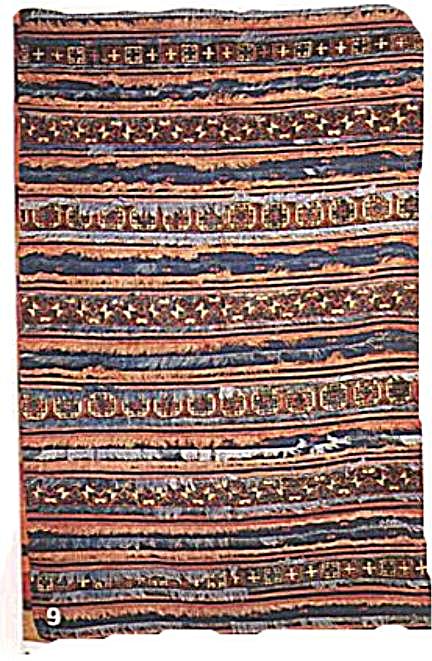Salon du Tapis d'Orient
The Salon du Tapis d'Orient is a moderated discussion group in the manner of the 19th century salon devoted
to oriental rugs and textiles and all aspects of their appreciation. Please include your full name and e-mail address
in your posting.
Cottage Industry Weaving of Rugs and Kilims in Turkey Today
by Jenny Gunay
My family having been in the manufacture and sale of woolen hand-woven rugs for more than 40 years, I`m very
much concerned about the fact that hand-weaving of rugs has seriously declined in Turkey during recent years. It
would be a pity if this form of art disappeared for economic reasons and a loss of villagers as a result of preference
for modern city life. The fact that fewer young people work in this field might eventually lead to a loss of all
the skills of this art, including knowledge about traditional ways of preparing and coloring the wool.
After some investigation, I was reassured to see that, even though the amount of rug weaving has decreased
almost by half, it is still quite active in many parts of Turkey. This activity is supported mainly by private
entrepreuners in the rug business and by government agencies in the form of cooperatives and educational programs
organized by the Ministry of Education. In addition, some universities such as Erzurum University, Selcuk University
in Konya, Dicle University in Diyarbakir (and a few others) have tapetology sections and projects.
I will try to provide a glimpse of the types of rugs being made in different areas compared to what was done in
those regions in the past. Unless specified otherwise, all modern hand-woven rugs use chemical dyes. There are
different combinations of materials being used for hand made pile rugs and kilims, including wool on wool, wool
on cotton, silk, and synthetic silks. Here's a map of Turkey for your convenience.

Let's begin with some central Anatolian cities. Kayseri, which only 20 years ago more or less specialized in the
production of wool on cotton rugs with Persian designs, now produces mostly wool on wool rugs with Turkish designs.
Silk carpets with a very fine weave are also produced there, as well as in Aksehir.

A silk Kayseri rug
Almost every type of pile rug, with designs from all regions, plus very high quality kilims are produced
in and near Konya. In contrast, the weavers of Nigde still specialize in the traditional regional designs, the
so-called Taspinar and Yahyali. They are made of entirely of wool, and some natural dyes are used.

Carpet; Central Anatolia

Carpet; Central Anatolia
Near the Aegean coast, the finest quality silk rugs of the Hereke type are made in Bursa. At the same time,
Hereke type rugs of wool pile on cotton foundations are woven there also. Isparta, formerly a source of rugs made
with wool pile on cotton foundations, now produces wool on wool rugs with the Milas pattern. Milas weavers produce
the design traditional to the region, using natural dyes. Demirci and Simav weavers are commercial producers of
rugs of all Turkish designs, with chemical dyes. In Sindirgi, the regional "Yagcibedir" design is still
woven, alongwith some other commercial rugs. Synthetic and natural dyes are both used there. There is a cooperative
project in Canakkale, which produces wool on wool rugs with "yoruk" designs together with traditional
regional designs; some natural dyes are used. Usak, which is well known for pile carpets in its regional design,
has changed completely, and only kilims are woven there now.

Balikesir Kilim; Western Anatolia

Balikesir Pile and Kilim Rug: Western Anatolia
In the south region, Antalya is still a source of its own regional "Dosemealti" rugs, which are
made using both chemical and natural dyes.
In the east, there is a new cooperative project planned by the Erzurum University, making Hereke type rugs at Ispir.
In Malatya, regional designs and qualities prevail. A cooperative project with wool on cotton production has also
started. The Dicle University project, weaving Hereke type rugs, is active in Diyarbakir.

Hakkari Kilim; southeastern Anatolia
This small tour is aimed at giving the readers a survey of present hand weaving of rugs in Turkey. I strongly hope
that the commerce in hand woven rugs will be revitalized in the world so that the decline in this form of art will
not progress too much further. If it ceases to be economical altogether, young people will not work in this area.
Our wish is for the attainment of even more perfection in rug weaving by younger generations and those of the future.
Discussion






